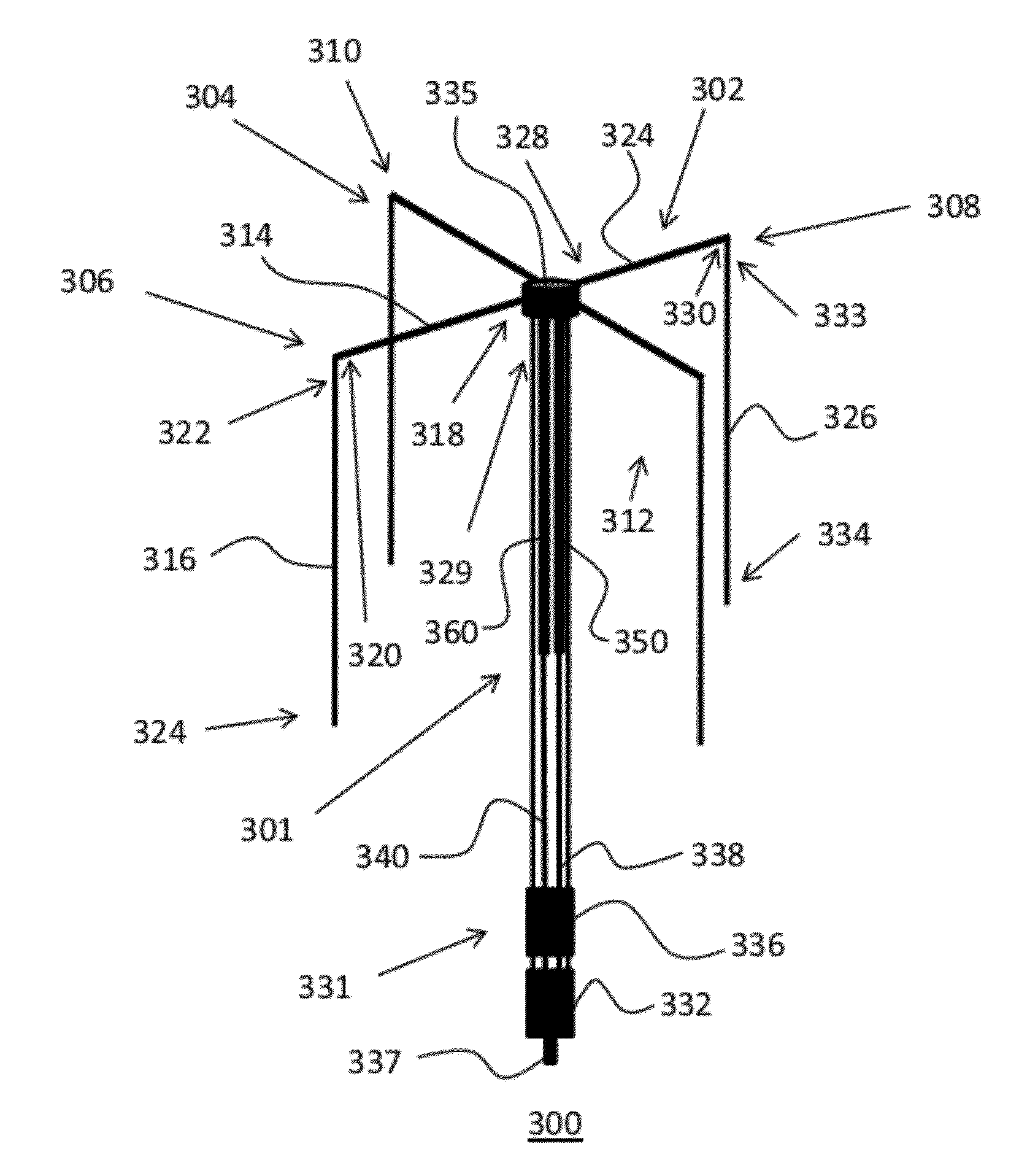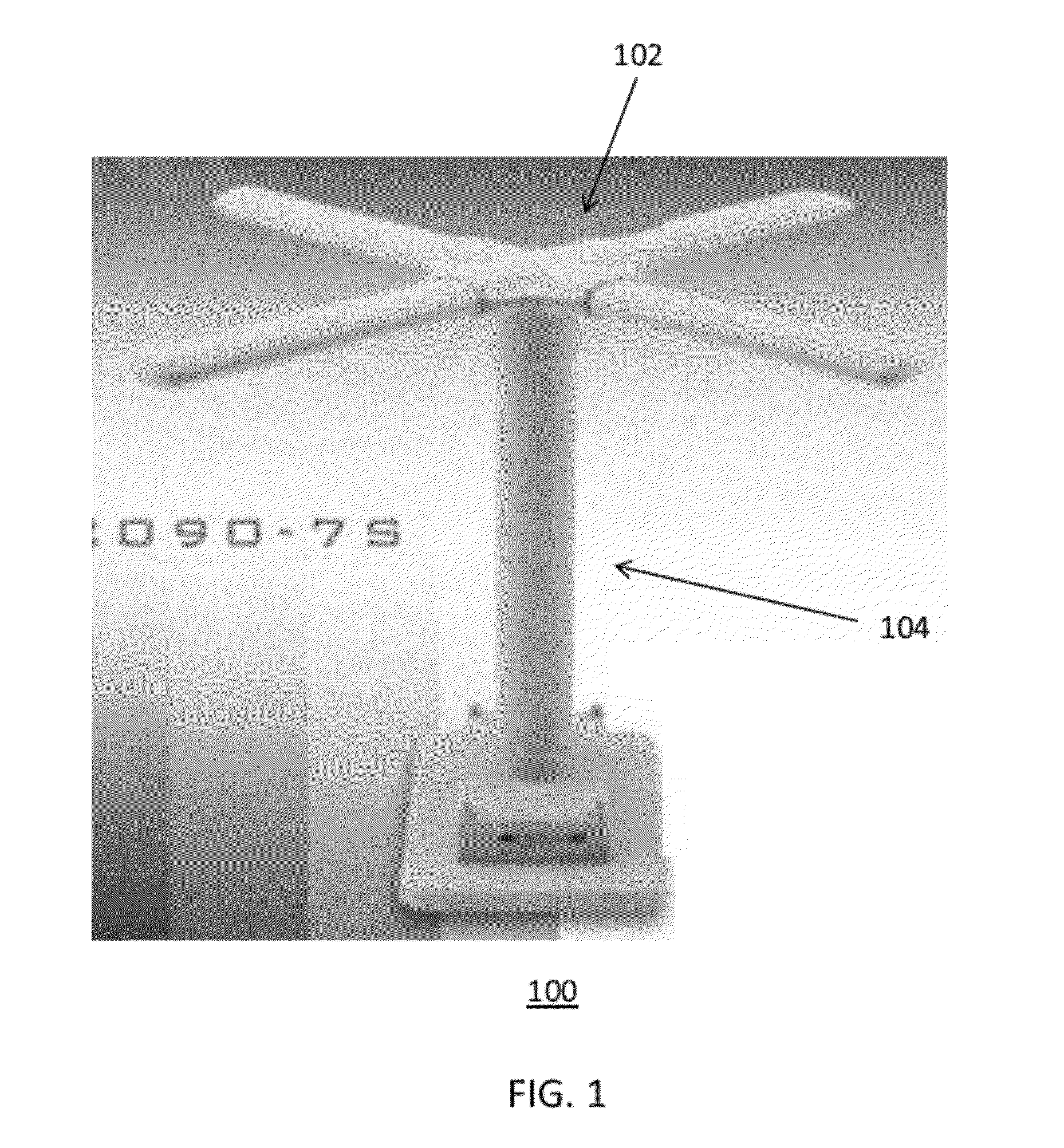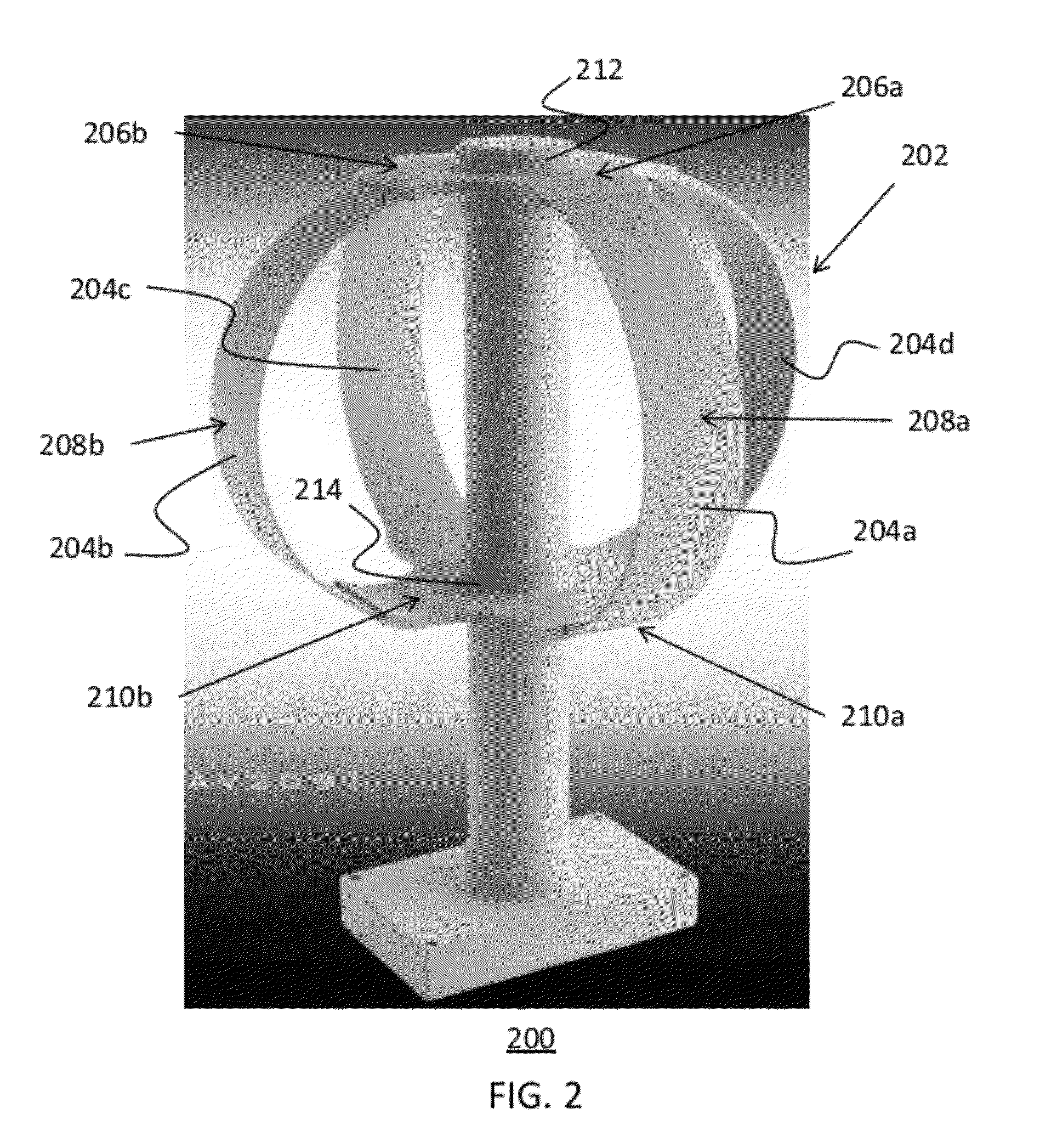Inverted-U Crossed-Dipole Satcom Antenna
a satcom antenna and cross-dipole technology, applied in the field of satellite communication (satcom) antennas, can solve the problems of difficult to guarantee, unsuitable antennas, difficult to choose, etc., and achieve the effect of improving radiation patterns and physical assembly advantages
- Summary
- Abstract
- Description
- Claims
- Application Information
AI Technical Summary
Benefits of technology
Problems solved by technology
Method used
Image
Examples
Embodiment Construction
[0052]While the specification concludes with claims defining the features of the invention that are regarded as novel, it is believed that the invention will be better understood from a consideration of the following description in conjunction with the drawing figures, in which like reference numerals are carried forward. It is to be understood that the disclosed embodiments are merely exemplary of the invention, which can be embodied in various forms.
[0053]The present invention, according to an embodiment, overcomes problems with the prior art by providing an antenna assembly with a single connector, that efficiently communicates in simultaneous high-angle and low-angle modes, and is simple and inexpensive to manufacture.
[0054]Described now is an antenna configuration, according to an exemplary embodiment of the present invention. The present invention is a cross polarized SATCOM antenna assembly that includes a set of inverted U-shaped radiating and receiving elements coupled to a...
PUM
 Login to View More
Login to View More Abstract
Description
Claims
Application Information
 Login to View More
Login to View More - R&D
- Intellectual Property
- Life Sciences
- Materials
- Tech Scout
- Unparalleled Data Quality
- Higher Quality Content
- 60% Fewer Hallucinations
Browse by: Latest US Patents, China's latest patents, Technical Efficacy Thesaurus, Application Domain, Technology Topic, Popular Technical Reports.
© 2025 PatSnap. All rights reserved.Legal|Privacy policy|Modern Slavery Act Transparency Statement|Sitemap|About US| Contact US: help@patsnap.com



